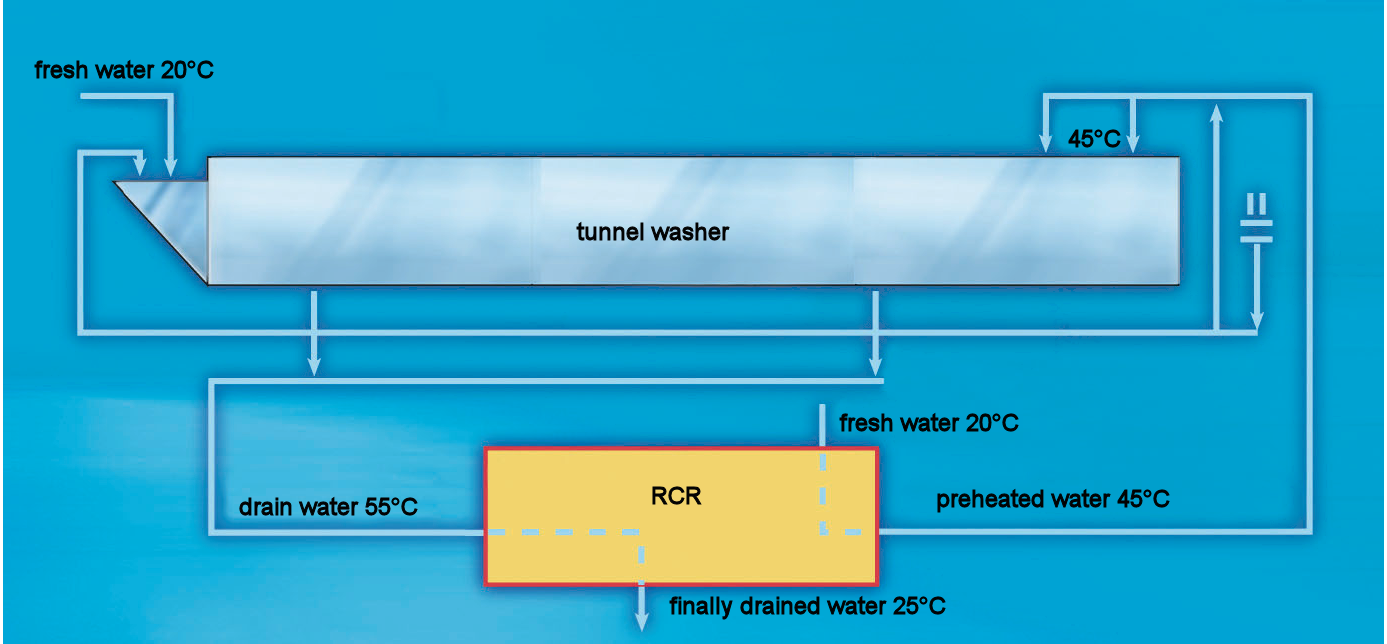Pozzi Leopoldo RCR EOP - heat recovery system
Industrial laundries
Application
- Home /
- application /
- Industrial laundries
INDUSTRIAL LAUNDRIES EFFICIENCY
POZZI has a capillary presence in industrial laundries : a strong co-operation with ECOLAB in the past years has proven successful in equipping a large number of industrial laundries in Europe with tools to reduce energy costs.
Ecolab recognised at an early stage that in industrial laundries the costs for water and energy have a big effect on the profitability of the business.
During the last years, in particular, it has become necessary to optimise costs.
Over this period the costs for water and energy have suffered drastic increases and the costs of fossil fuels have continued to rise , with no sign of changing the trend.
Effective resource management and professional systems for saving energy in laundries and are thus important today as never before.
CBV's and washer extractors can benefit of an important energy saving by mounting a specially deviced POZZI RCR onto their hydraulic circuitry .
RCR is a very effective heat exchanger which has been specially developed for handling wastewater with a large content of textile fibers.
The system has several advantages:
- Easy to install
- Minimal maintenance
- Self-cleaning
- No prefiltration
- No need for pumps
- Energy savings of up to 20% in the finish process
- Energy savings of up to 50% on washing sections
- Reduction of drain waste water temperature
In some cases, the temperature of the drains in the laundry sewage can be as high as 60 ° C. which means that we are using the energy to heat up our drains instead of using it in the laundry process.
The high temperature of the drains may even exceed the allowed limit values for sewage.
RCR works according to a very simple principle. The hot waste water coming from the washing circuit flows into the heat exchanger, where the thermal energy is transferred to the cold inlet water.
The cold water is heated to about 45 ° C and can be used immediately in the rinse zone and in the prewash.

mounting an RCR, The waste water that flows into the sewage is cooled down to about 25 ° C, following in this way the official requirements of sewage limit temperature.
What happens to the washing process when using RCR , for example in a tipical hospital-sector laundry ?
- The temperature of the cold inlet water rises to 35 ° C - 50 ° C
- The temperature of the dewatering press water rises to 40 ° C - 55 ° C
- 2 liters of clean water and 3 liters of press water are used for prewashing
- The residual press water is reused in the rinse section of the tunnel.
When the pre heated weter coming from the heat exchanger is used in the rinse zone it not only lowers washing energy consumption but also reduces the costs of drying and finishing process.
In fact, when the dewatering press is fed with material at higher temperature, the dewatered textiles contain less moisture.
This will contribute to shorten the drying time (with an increased drying capacity as a result) and to increase the ironing capacity.